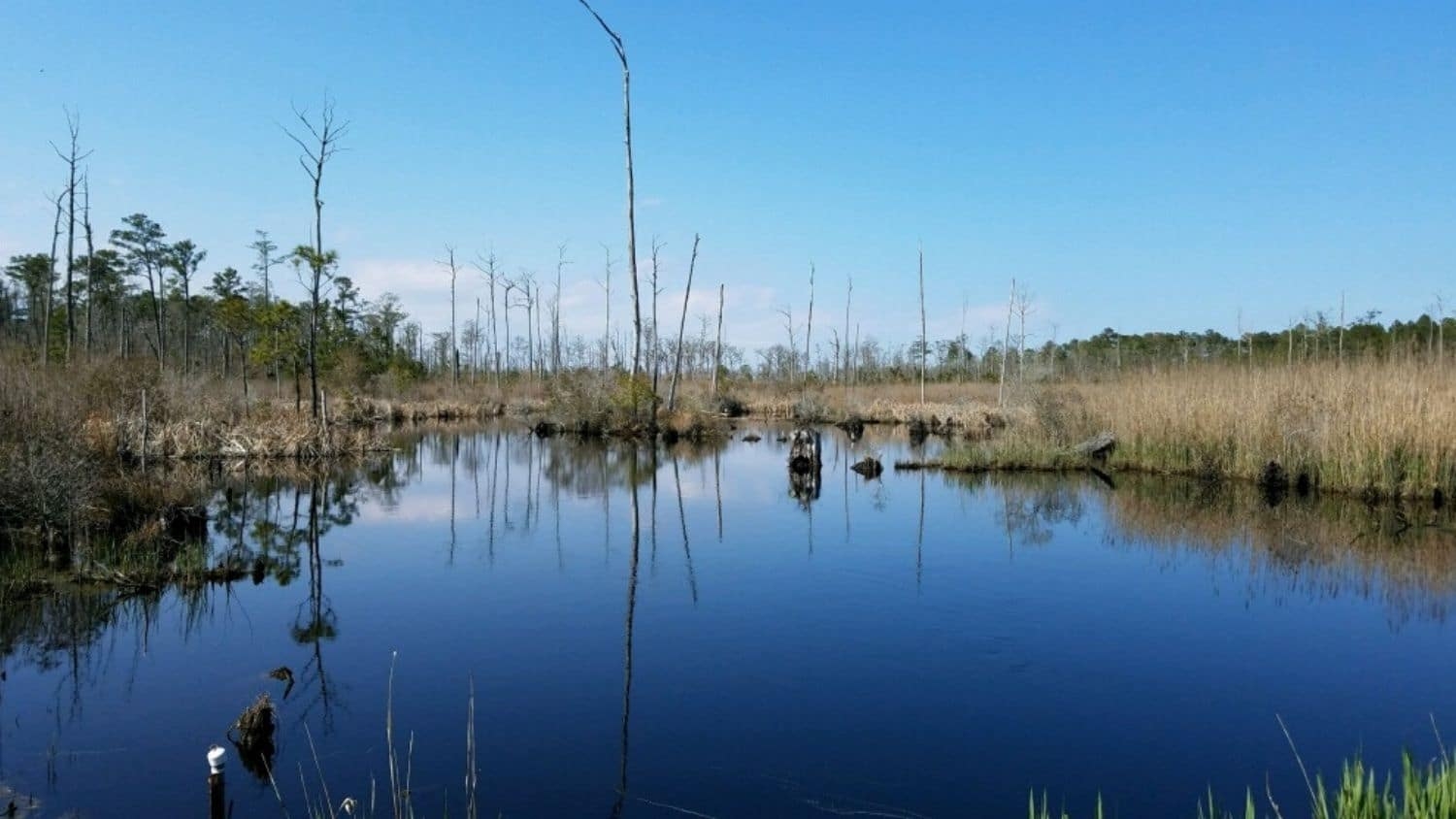Satellite imagery may help protect coastal forests from climate change

Sea-level rise caused by climate change poses a serious and often unpredictable threat to coastal forests, and new tools are needed to help mitigate damage and allocate conservation resources.
A new study from North Carolina State University and the United States Geological Survey (USGS) details how satellite imagery may help identify forested areas that are being transformed into marshes and open water by sea-level rise, a process known as regime change. Marcelo Ardón, associate professor at NC State and co-author of a paper on the study, said that by predicting how an area is changing, this new modeling tool may help conservationists apply their limited funding in areas where it will be the most effective.
“We know that these coastal ecosystems are changing, and it’s hard to predict where and when the change is going to happen. What we found is that through remote sensing, you can get a trajectory of where an area is going,” Ardón said. “That way you can identify which areas might be better to put funding into; if an area might not need help, or if it is just too far into the regime change to pull it back. That in turn can help allocate those limited conservation dollars where they will make the most difference.”
Initially, researchers set out to determine if satellite imagery could be used to detect regime change in coastal wetlands ahead of time by identifying the kinds of early-warning signals that have been found in other ecosystems. These results proved inconsistent, Ardón said. While the data could sometimes detect those signals, it also returned false positives and negatives.
Instead, researchers were able use the same satellite data tool – a metric called the Normalized Difference Vegetation Index – to identify how vegetation health was changing. The NDVI works by using multiple wavelengths from satellite sensors that scan the earth at different times, collecting data on how much red light plants absorb and how much near-infrared light they reflect. Using these values researchers can estimate the NDVI, which effectively measures the greenness and health of plants in the area. The NDVI of a forest is higher than that of a marsh or open water, so it can be used to detect the changes of these systems.
Lead author Melinda Martinez, research ecologist with the USGS, first worked on the study as a Ph.D. student at NC State. She said that the study uncovered stark differences in regime changes between areas that were close together.
“In some areas where regime change was happening quickly, the transitions from forest to marsh or even open water happened within the span of five to six years,” Martinez said. “But then in other areas, sometimes places within the same site, it would happen over much longer periods of time. We knew there would be variation, but we didn’t expect that level of difference between areas in such proximity.”
The study, “Detecting trajectories of regime shifts and loss of resilience in coastal wetlands using remote sensing,” is published in Ecosystems. Authors include Melinda Martinez, Marcelo Ardón and Josh Gray. This work was funded by National Science Foundation (DEB1713502) as well as North Carolina Sea Grant/Space Grant Fellowship.
-pitchford-
Note to Editors: The study abstract follows.
“Detecting trajectories of regime shifts and loss of resilience in coastal wetlands using remote sensing”
Authors: Melinda Martinez, Marcelo Ardon, Josh Gray.
Published: 10/31/2024
DOI: 10.1007/s10021-024-00938-5
Abstract: Many freshwater forested wetlands along the southeastern United States coastline are rapidly transitioning from forest to marsh or open water, due to climate change related disturbances. Recent studies have found early warning signals (EWS) of regime shifts in other ecosystems, but it is unclear if these can be detected for coastal wetlands. In this study, we examined the ability to detect EWS of regime shifts in coastal wetlands within the Albemarle Pamlico peninsula (APP), North Carolina, U.S.A. We used the Landsat record (1985-2021) to examine trends of normalized difference vegetation index (NDVI) time series for selected areas known to have undergone regime shifts. We found that while 77% of the APP was either stable or revegetating, 22% of the landscape underwent a decrease in NDVI that would indicate a transition from forest to marsh or open water. Of the areas that transitioned, about half (11%) experienced an abrupt decrease in NDVI and 10% experienced a gradual decline. Increasing standard deviation and skewness of time series could serve as EWS of abrupt transitions, but can also provide false negative and positives. Our results suggest that ecosystem transitions from a forest to a marsh or open water can occur both rapidly and slowly, and remote sensing of NDVI time series can help identify EWS for some areas, but not all. Our results allow for prioritization of conservation/restoration of coastlines which will become important in the face of climate change and sea level rise.
This post was originally published in NC State News.